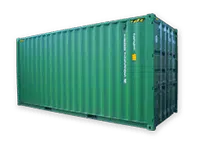Everybody knows that housing prices in Australia – especially Sydney and Melbourne – are insanely high. So much so that many millennials being forced to rent with little or no hope of ever saving up a deposit to be able to buy their own home. Shipping Container homes are a great option but there are Challenges of Using Shipping Containers for Affordable Housing in Australia.
Shipping Containers for Affordable Housing Australia
Housing prices have been going up in Australia’s major cities for years, making both home ownership and tenancy a challenge for a growing chunk of the population. Shipping containers, because of their durability, portability and affordability, have become a partial solution to the affordable housing crisis. As an added social benefit, repurposing shipping containers into homes, workspaces and other uses is a creative way to cut down on unnecessary waste.
They do appear as an ideal answer to the problem of affordable housing and offer numerous sustainability benefits. But, in order to make this positive trend work in the long-term, it’s important to address potential issues to ensure they are being constructed efficiently and to adequate standards of health and safety.
Tracking the Content History
One concern is ensuring the shipping containers for affordable housing weren’t carrying any harmful materials such as carcinogens or harsh chemicals. In most cases, cleaning the containers is enough. Still, it is possible that harmful chemicals are left behind without leaving a visible trace. Also, anyone who is going to live in a space would want to know if the history of its contents would be a cause for concern. This is why it’s important to get shipping containers from a trusted source, providers who are able to track their containers’ history and take the time to thoroughly clean and prepare the interior and exterior of the containers.
Installing Adequate Insulation
As shipping containers are made from steel, they aren’t the best natural insulators. In fact, as steel quickly heats up in the summer and cools in the winter, shipping containers on their own have poor insulation. The Building Code of Australia, as well as local and shire councils have set standards for insulation. Builders need to get approvals for insulation and find a way to insulate a space without adding to the interior, and diminishing an already small space.
One solution is to follow the precedent of those who have already converted shipping container homes successfully. New Zealander, Brenda Kelly, and founder of IQ Container, uses a special, closed cell polyurethane, installing 1.5 times the building code requirement for maximum benefit. This also helps to reduce the need for heating and cooling, making the home more energy efficient.
Ensuring Proper Structural Integrity
When installing windows and doors into the steel frame, the structural integrity of the container is changed. A structural engineer needs to be involved in the planning process to prevent problems and guarantee a well-built home. The steel frame itself will last for decades. Steel is one of the most indestructible materials used in building, which is part of why using shipping containers for homes, offices and other purposes is so appealing. However, when the frame is altered, it’s important to make sure the building is still secure and designed for longevity and safety.
Shipping containers for affordable housing offers a green, low-cost solution. When well-designed, properly constructed and equipped to be as efficient as possible, they have the potential to revolutionise the way we view housing. To find out more about converting and modifying high quality containers, get in touch with a member of our team today.








